What Does The Us Department Of Health And Human Services Consider To Be The Most Hazardous
Administration for Children and Families (ACF)
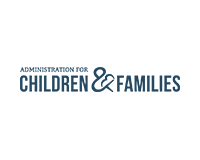
The Administration for Children & Families promotes the economic and social well-being of families, children, individuals and communities through a range of educational and supportive programs in partnership with states, tribes, and community organizations.
Administration for Community Living (ACL)
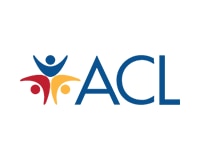
The Administration for Customs Living increases access to community support and resource for the unique needs of older Americans and people with disabilities.
Agency for Healthcare Research and Quality (AHRQ)
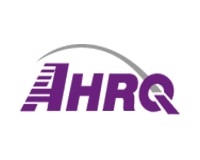
The Agency for Healthcare Research and Quality'southward mission is to produce evidence to make wellness care safer, higher quality, more accessible, equitable, and affordable, and to work within HHS and with other partners to make sure that the evidence is understood and used.
Agency for Toxic Substances and Affliction Registry (ATSDR)
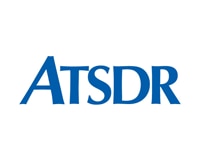
The Agency for Toxic Substances and Illness Registry prevents exposure to toxic substances and the agin health furnishings and diminished quality of life associated with exposure to hazardous substances from waste material sites, unplanned releases, and other sources of ecology pollution.
Assistant Secretary for Administration (ASA)
ASA provides leadership for HHS departmental direction, including human resource policy and departmental operations.
Assistant Secretary for Fiscal Resources (ASFR)
ASFR provides communication and guidance to the Secretary on budget, financial direction, acquisition policy and support, grants management, and pocket-sized business organization programs. Information technology as well directs and coordinates these activities throughout the Section.
Banana Secretary for Wellness (ASH)
ASH advises on the nation's public wellness and oversees HHS' U.S. Public Service (PHS) for the Secretary.
Assistant Secretarial assistant for Legislation (ASL)
ASL provides advice on legislation and facilitates advice between the Department and Congress.
Assistant Secretary for Planning and Evaluation (ASPE)
ASPE advises on policy development and contributes to policy coordination, legislation development, strategic planning, policy research, evaluation, and economic analysis.
Assistant Secretarial assistant for Preparedness and Response (ASPR)
ASPR advises on matters related to bioterrorism and other public health emergencies.
Assistant Secretary for Public Affairs (ASPA)
ASPA provides centralized leadership and guidance on public affairs for HHS' staff, operating divisions, and regional offices. APSA as well administers the Freedom of Data and Privacy Act.
Middle for Organized religion-Based and Neighborhood Partnerships (CFBNP)
CFBNP leads the section's efforts to build and back up partnerships with faith-based and neighborhood organizations to better serve individuals, families and communities in need.
Centers for Illness Control and Prevention (CDC)
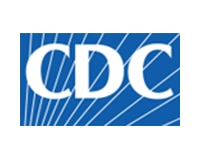
The Centers for Disease Control and Prevention, part of the Public Health Service, protects the public wellness of the nation by providing leadership and direction in the prevention and control of diseases and other preventable atmospheric condition, and responding to public health emergencies.
Centers for Medicare & Medicaid Services (CMS)

The Centers for Medicare & Medicaid Services combines the oversight of the Medicare programme, the federal portion of the Medicaid plan and State Children's Wellness Insurance Program, the Health Insurance Marketplace, and related quality assurance activities.
Departmental Appeals Board (DAB)
DAB provides impartial review of disputed legal decisions involving HHS.
Nutrient and Drug Administration (FDA)

The Food and Drug Assistants, office of the Public Health Service, ensures that food is condom, pure, and wholesome; human and animal drugs, biological products, and medical devices are safe and constructive; and electronic products that emit radiation are safe.
Health Resources and Services Administration (HRSA)

The Health Resources and Services Administration, part of the Public Wellness Service, provides health care to people who are geographically isolated, economically or medically vulnerable.
Firsthand Part of the Secretary (IOS)
IOS oversees the Secretarial assistant'south operations and coordinates the Secretarial assistant's piece of work.
Indian Health Service (IHS)

The Indian Wellness Service, part of the Public Health Service, provides American Indians and Alaska Natives with comprehensive health services by developing and managing programs to meet their health needs.
National Institutes of Health (NIH)
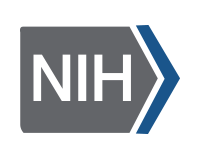
The National Institutes of Health, part of the Public Health Service, supports biomedical and behavioral inquiry with the Us and away, conducts research in its own laboratories and clinics, trains promising young researchers, and promotes collecting and sharing medical knowledge.
Office for Ceremonious Rights (OCR)
OCR ensures that individuals receiving services from HHS-conducted or -funded programs are not discipline to unlawful discrimination, that individuals and entities can do their conscience rights and religious liberty, and that individuals can access and trust the privacy and security of their health information.
Function of Global Diplomacy (OGA)
The HHS Office of Global Affairs provides leadership and expertise in global wellness affairs to contribute to a safer, healthier world.
Office of Inspector Full general (OIG)
OIG protects the integrity of HHS programs as well as the wellness and welfare of the program participants.
Part of Intergovernmental and External Affairs (IEA)
IEA represents the both the authorities and external perspective in federal policymaking and clarifies the federal perspective to government officials and external parties.
Office of Medicare Hearings and Appeals (OMHA)
OMHA administers nationwide hearings for the Medicare plan.
Office of National Security (ONS)
ONS manages Section-broad programs and provides oversight, policy direction, standards, and performance assessments in the areas of intelligence, counterintelligence, insider threat, cyber threat intelligence, information security, national personnel security, homeland security, and the safeguarding of classified data.
Part of the Primary Technology Officer (CTO)
The Office of the CTO harnesses the power of information, technology, and innovation to create a more modern and constructive government that works to improve the health of the nation.
Office of the General Counsel (OGC)
OGC provides quality representation and legal communication on a wide range of highly visible national problems.
Role of the National Coordinator for Health Information Technology (ONC)
ONC provides counsel for the evolution and implementation of a national health information technology framework.
Substance Corruption and Mental Health Services Administration (SAMHSA)
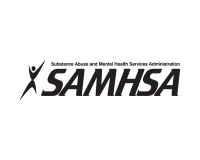
The Substance Abuse and Mental Wellness Services Assistants, part of the Public Health Service, improves admission and reduces barriers to high quality, effective programs and services for individuals who suffer from or are at risk for addictive and mental disorders, equally well as for their families and communities.
Source: https://www.hhs.gov/about/agencies/hhs-agencies-and-offices/index.html
Posted by: scottjudetted.blogspot.com


0 Response to "What Does The Us Department Of Health And Human Services Consider To Be The Most Hazardous"
Post a Comment